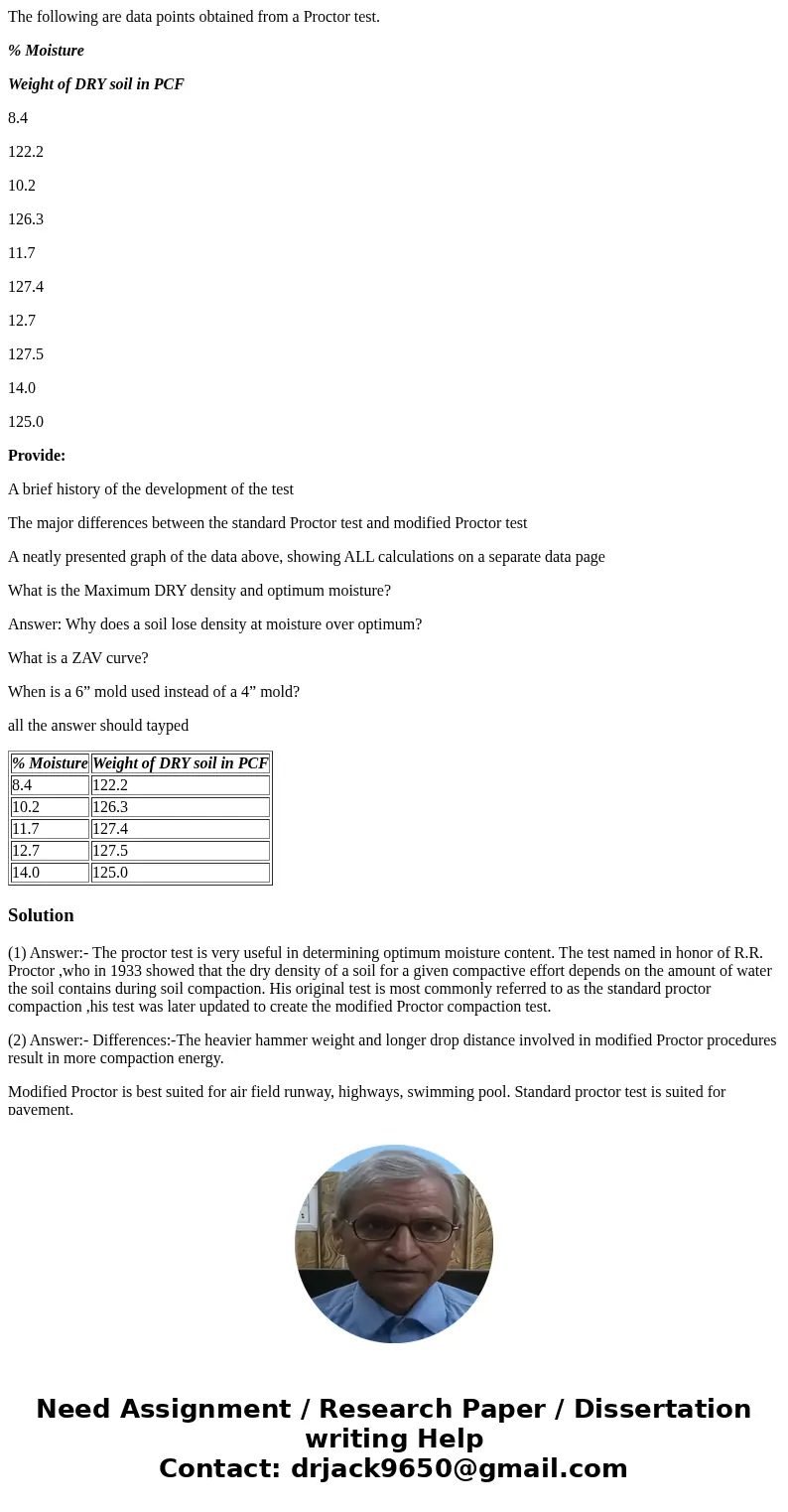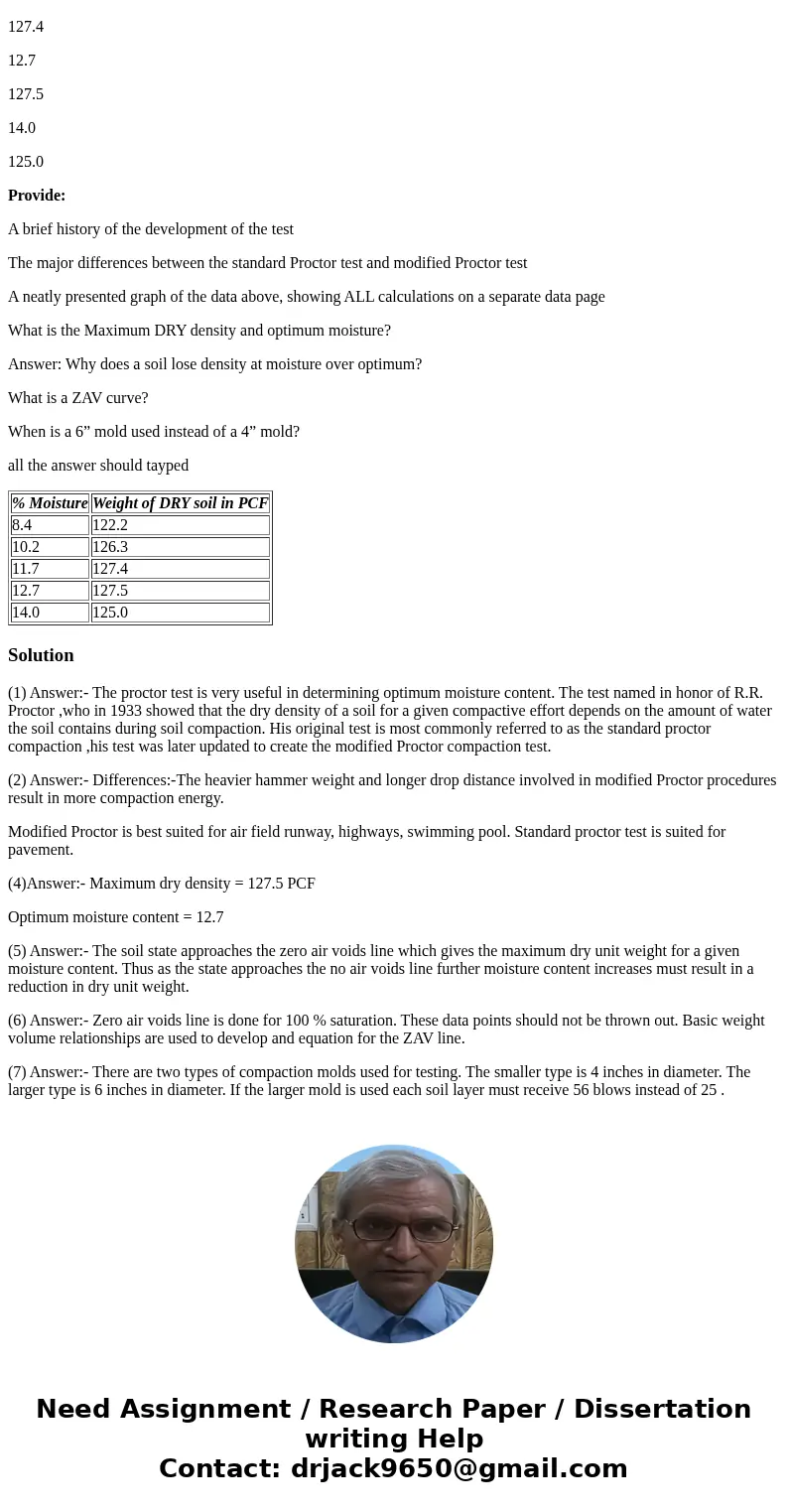The following are data points obtained from a Proctor test
The following are data points obtained from a Proctor test.
% Moisture
Weight of DRY soil in PCF
8.4
122.2
10.2
126.3
11.7
127.4
12.7
127.5
14.0
125.0
Provide:
A brief history of the development of the test
The major differences between the standard Proctor test and modified Proctor test
A neatly presented graph of the data above, showing ALL calculations on a separate data page
What is the Maximum DRY density and optimum moisture?
Answer: Why does a soil lose density at moisture over optimum?
What is a ZAV curve?
When is a 6” mold used instead of a 4” mold?
all the answer should tayped
| % Moisture | Weight of DRY soil in PCF |
| 8.4 | 122.2 |
| 10.2 | 126.3 |
| 11.7 | 127.4 |
| 12.7 | 127.5 |
| 14.0 | 125.0 |
Solution
(1) Answer:- The proctor test is very useful in determining optimum moisture content. The test named in honor of R.R. Proctor ,who in 1933 showed that the dry density of a soil for a given compactive effort depends on the amount of water the soil contains during soil compaction. His original test is most commonly referred to as the standard proctor compaction ,his test was later updated to create the modified Proctor compaction test.
(2) Answer:- Differences:-The heavier hammer weight and longer drop distance involved in modified Proctor procedures result in more compaction energy.
Modified Proctor is best suited for air field runway, highways, swimming pool. Standard proctor test is suited for pavement.
(4)Answer:- Maximum dry density = 127.5 PCF
Optimum moisture content = 12.7
(5) Answer:- The soil state approaches the zero air voids line which gives the maximum dry unit weight for a given moisture content. Thus as the state approaches the no air voids line further moisture content increases must result in a reduction in dry unit weight.
(6) Answer:- Zero air voids line is done for 100 % saturation. These data points should not be thrown out. Basic weight volume relationships are used to develop and equation for the ZAV line.
(7) Answer:- There are two types of compaction molds used for testing. The smaller type is 4 inches in diameter. The larger type is 6 inches in diameter. If the larger mold is used each soil layer must receive 56 blows instead of 25 .


 Homework Sourse
Homework Sourse